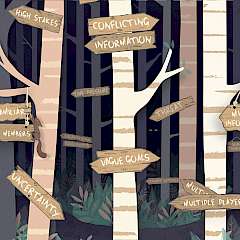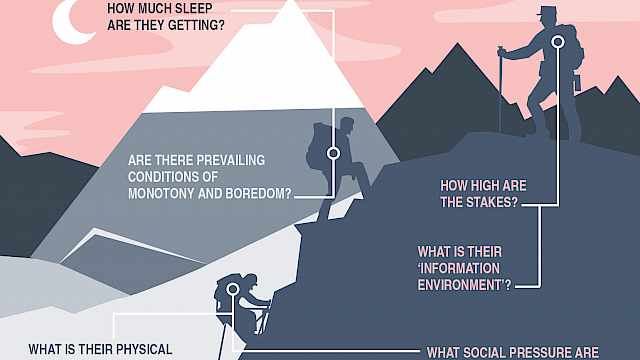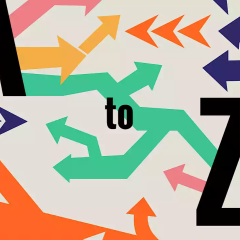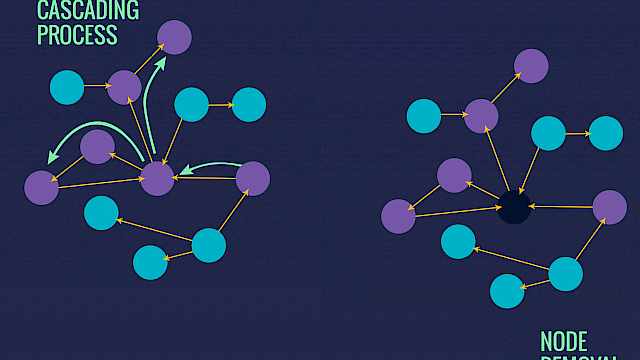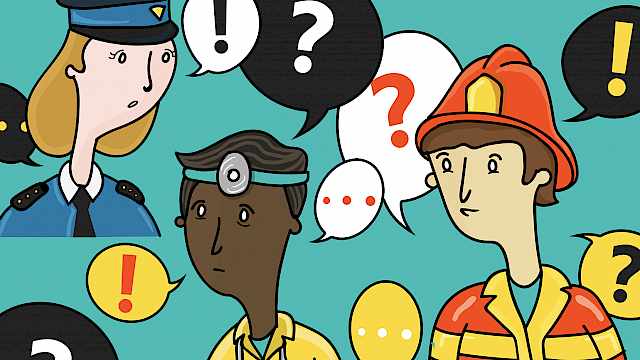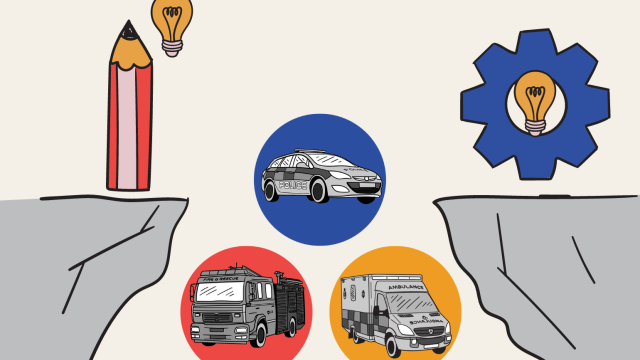Anchoring
is the irrational tendency for people to root their judgements during decision making to the first piece of information they receive, even if this information is arbitrary or misleading.
Biases
– as in cognitive biases – are the resulting errors in decision making that arise from heuristic ‘rule-of-thumb’ processing. They occur when individuals disengage with rational cognitive processing and instead rely on intuitive (albeit faulty) mental shortcuts.
Consequence choosing
is a process involved during more deliberative decision-making tasks, wherein decision-makers consider the longer-term outcomes of their potential choices, rather than focussing on immediate- or short- term preferences.
Devil’s advocate technique
involves purposely assigning a team member to argue against the position of the majority. It is thought to reduce groupthink.
Ecological inference problem
is the technical name given to the fact that one can’t successfully make inferences about an individual based on data captured at the aggregate level.
Forestalling
is a decision strategy that can be used to buy time when coping with uncertainty. It involves preparing various courses of action to counter potential negative outcomes for choices and is often accompanied with deferral and choice delay.
Goals
act as motivational markers that orient decision making and direct human behaviour around purposeful outcomes.
Heuristics
are the mental shortcuts or ‘rules-of-thumb’ that people use when making judgements. Although heuristics can be constructive, they can also lead to faulty or biased decision making.
Inertia
– as in decision inertia – is the maladaptive process of redundant deliberation over a choice for no meaningful gain. It has been observed in high-stakes decision-making contexts, wherein the decision-maker cannot disengage with cognitive processing (i.e. due to organisational responsibilities) but feel unable to commit to a choice.
Judgement and Decision-making (JDM)
is a multi-disciplinary approach to decision-making research based on experimental studies that seek to predict or explain judgements and decisions using quantified or mathematical models.
Kahneman
(Daniel) is a Nobel prize-winning psychologist for his research on economic decision making. He is most famous for his work, with Amos Tversky, on Prospect Theory, heuristics and biases.
Loss aversion
refers to a bias in human decision making wherein individuals will take far higher risks to avoid losses than they would to acquire equivalent gains. If given the choice to take a sure £100 or gamble to win £200 (or nothing), most people will take the £100; but when asked to lose a certain £100 or gamble to lose £200 or nothing, most people will take the gamble. People take higher risks to avoid loss.
Machine learning
is a computer sciences approach to study complex learning and decision-making problems. It explores how computers can be used to detect patterns, learn and construct algorithms that can be used to explain and interpret large and complex data sets.
Naturalistic Decision Making (NDM)
is an approach to decision-making research that studies how people make decisions and perform in demanding (often organisational) real-world settings. Research domains include the Emergency Services, Aviation and Hospital Settings.
Organisational decision-making
research explores how people make decisions in work domains. This kind of research seeks to identify how organisational decision-making can be supported (e.g. decision support tools) and further seeks to unpack expertise in work domains to accelerate its development with novice or new trainees.
Prospect Theory
is a descriptive model used to explain how people make decisions under conditions of uncertainty and risk. It posits that individuals make decisions based upon probabilistic estimates linked to losses and gains, but these estimates can be subjectively skewed due to cognitive heuristics and biases (e.g. loss aversion).
Quantifying outcomes
objectively is the holy grail of decision-making according to Expected Utility Theory. But we know from psychology that the capacity for objective quantification is rare due to cognitive and environmental constraints that bound rationality.
Representativeness
is a heuristic that describes how people assume prototypical knowledge about something based on past experience with something similar (e.g. stereotyping).
System 1 or System 2 thinking
– Kahneman’s dichotomy on how humans make decisions: using fast and frugal intuitive system one thinking; or slower and effortful system two thinking.
Thirty-seven per cent
is the optimal amount of your committed time that you should spend exploring options – looking – before you commit – leaping – to buying a house, to dating a partner, etc.). Google the ‘Secretary problem’.
Uncertainty
is a sense of doubt that blocks or delays decision making and action. It is linked to perceived risk about a decision problem and judgements on current and anticipated future states. People try and cope with uncertainty by adapting their cognitive processing styles (e.g. relying on heuristics; using decision support systems).
Variability
in decision making is inherent in the real world. People can vary the way they approach the same decision problem due to numerous factors including, expertise in the decision domain, personality and cognitive processing styles.
War Games
are military exercises used to test warfare strategies and identify combat readiness. Interestingly, playing war games has been found to lead to overconfidence in expectations of success, with this effect especially pronounced in men.
Xtreme environments
are high-risk and highly uncertain contexts that place huge demands on the physical, psychological and interpersonal skills of decision-makers. They are of particular interest to scholars engaged in NDM research; for example, decision making in military contexts.
Yes vs. No
or, as they are defined in the literature, promotion focused vs. preventative focused. The former looks outward toward new horizons. The latter makes sure everything is completed and correct with the status quo before moving on. Both are critical to successful teams.
Zero-sum games
are used to explore conflict and cooperation between decision-makers, wherein one player’s gains are equivocal to the losses of another player so that the sum of outcomes is always zero (e.g. Poker – where the amounts won by some players are equal to the combined losses of other players).
Copyright Information
As part of CREST’s commitment to open access research, this text is available under a Creative Commons BY-NC-SA 4.0 licence. Please refer to our Copyright page for full details.
IMAGE CREDITS: Copyright ©2024 R. Stevens / CREST (CC BY-SA 4.0)

